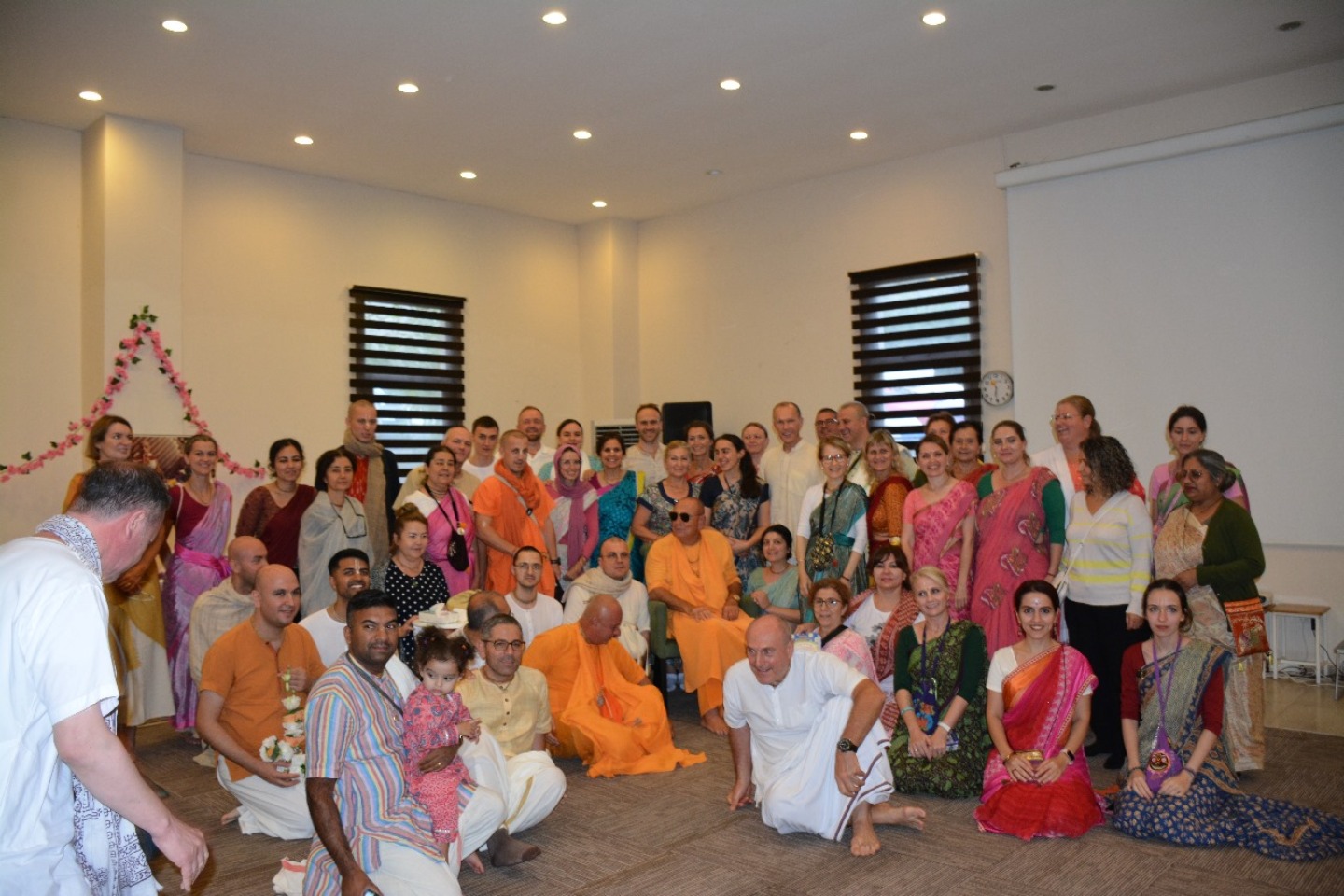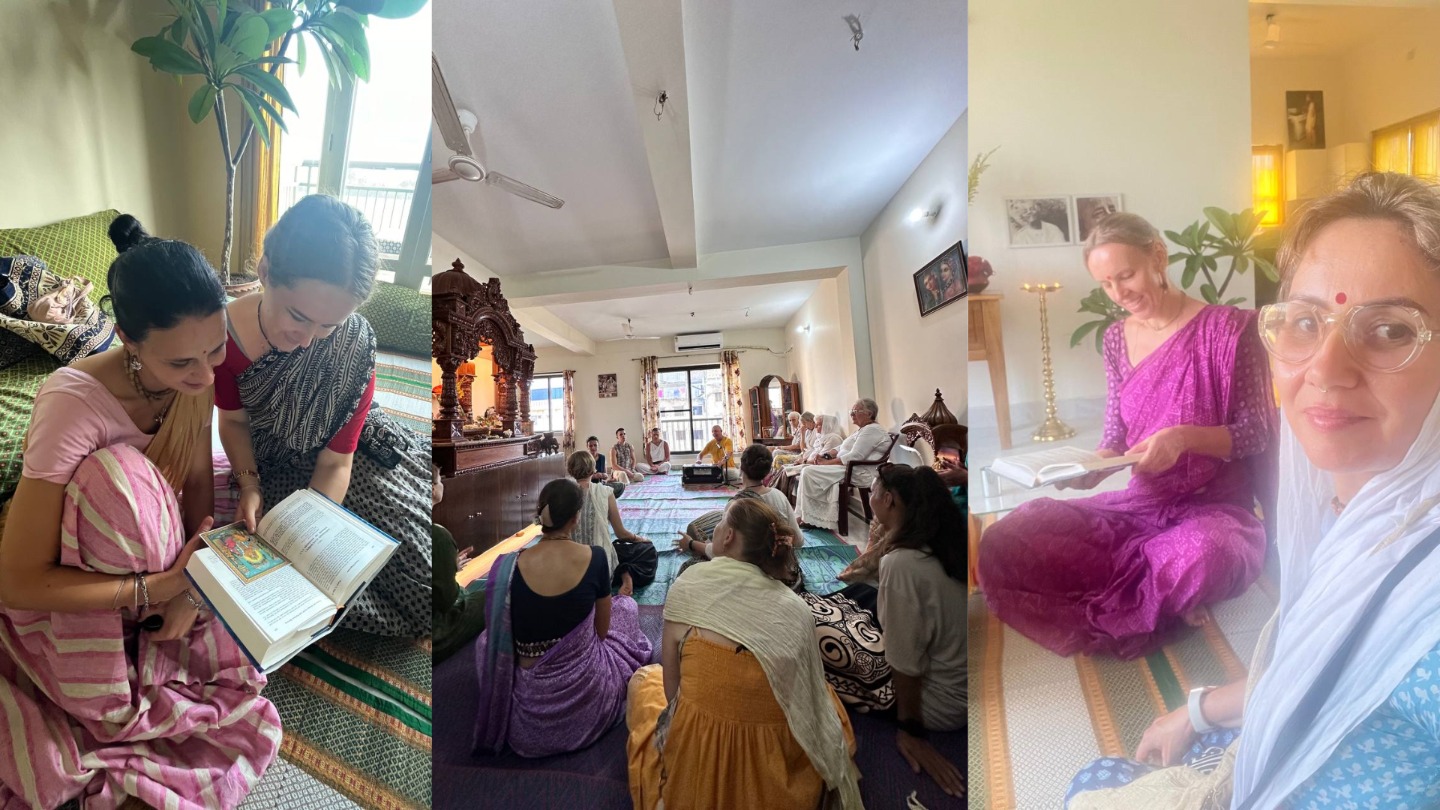Someone sent me this question: I just finished the 3rd canto of the bhagavatam. Why does it say women/family life are maya? I want to find the girl who is right for me, as you did. But I also want to avoid maya. I don’t understand. If you could answer that’d be awesome.
My reply:
I think you’re talking about this section of Bhāgavatam (3.31.33~42), where Kapila informs his mother that husbands are like hunters setting traps, and so on.
When I was studying that section of Bhāgavatam my Sanskrit and Philosophy teacher reviewed my notes on it and said something like, “Yes, but if someone reads only this they will think that the solution is to give everything up – but this is not the solution Kapila will present.”
If you just focus on the section you are probably focusing on, you will get the wrong idea about how to get out of māyā. Kapila’s solution to getting out of māyā is just after this section, at the end of chapter 31. Here it is. Please read it carefully, slowly, a few times. It is subtle, and it is different than what a lot of people out there will tell you, so read it patiently and with faith that it is Śrīmad Bhāgavatam and the words of Kapila Deva.
To help a little, I’ll try to explain a little. Kapila says that we cannot run away from māyā, but we can learn to interact with māyā in a way that promotes enlightenment rather than illusion.
Here is the really relevant section:
Warmly, Kapila explained, “Mother, if you keep your inner thought focused on your true destination as a living being, then you will be able to move about this world of hunter’s songs and death traps without becoming allured and ensnared by the negativity of it all.”
Taking hope, she would ask, “How should I do that? How should I keep my inner thought focused on my true destination as a spirit soul?”
“By seeing the world in the right way!” Kapila said. “Not by running away from the world, but by seeing it correctly. Not by running away from a beautiful wife, handsome husband or loving child, but by seeing them all correctly.”
“What is the ‘correct’ way to see them?” She would ask.
“Look upon the world, but look upon it through the eyes of wisdom,” he explained. “Put your wisdom into practice! That is the proper way to deal with this potentially horrible world, and transform it into a truly positive experience. If you put your wisdom into practice you will become empowered with natural and effortless detachment from the world. This will enable you to interact with the physical, sensual realm in a disciplined, controlled way.”
Love and relationships in this world are not the source of bondage. Selfish desire is the source of bondage, and selfish desire hijacks our love and relationships. We are not supposed to discard love and relationships we are supposed to discard selfish desires, and gradually learn how to relate with our friends, spouse, family, etc. in a way that is service-oriented, generous, unselfish, giving, LOVING in the real sense of the word.
All religious strictures, disciplines, etc. are meant to facilitate this way of interacting with the world, and it is the subject of the first six chapters of Bhagavad Gītā, and is known as karma-yoga.
If you have very, very strong bhakti-realization as a result of extensive bhakti-yoga in previous lifetimes, you will not need karma-yoga. Even still you may adopt it out of convenience or convention, or to set a good example for the rest of us, who do need karma-yoga as a stepping stone to jñāna-yoga, both of which support and are subsumed within real and sincere practice of bhakti-yoga. Even if you practice karma-yoga, you will practice karma-miśra-bhakti-yoga, not karma-yoga literally. Karma-miśra-bhakti is bhakti in which karma-yoga forms an initial support. So you will advance by cultivating strong bhakti. This will enable your selflessness in worldly relationships. In all cases, the most important practice is to read Bhāgavatam carefully under realized guidance, and to chant nāma-japa with significant effort on true focus, and to take shelter of nāma-kīrtan.
Destiny will send you a good romantic companion. Learn how to relate to her without selfishness, for her service. As you get the hang of that, it will be very easy to sincerely and deeply inter-relate in the service of the divine. Thus hearing Bhāgavatam, and doing nāma-japa/kīrtan will be the way forward as well as the goal. Do not worry too much about anything else, “should I this? Should I not that? Should I feel X or Y?” These are distractions from the main practice, the essence. Nām and Bhāgavatam.
















